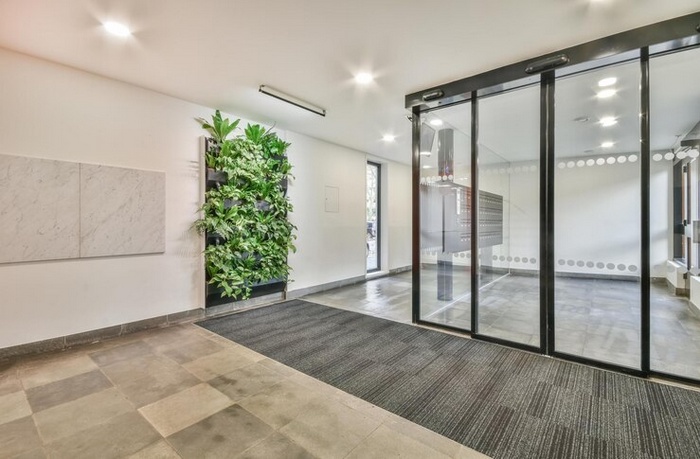Introduction
In the realm of contemporary architecture and interior design, the integration of sustainability has become a defining characteristic. The pursuit of eco-friendliness and style is exemplified through the choices made in constructing and designing glass doors. Glass doors have evolved from being mere functional elements to aesthetic and sustainable features in modern spaces. This article explores the intersection of sustainability and style in contemporary glass door choices, highlighting how eco-friendly design can complement and enhance the overall appeal of living and working environments.
Material Selection: The Foundation of Sustainability
When considering sustainability in contemporary glass door design, the choice of materials takes center stage. The materials used in framing glass doors can significantly impact their eco-friendliness. Designers and architects often opt for sustainable materials such as reclaimed wood, recycled metal, or aluminum for framing.
Reclaimed wood, for instance, provides a unique character to glass doors while contributing to the preservation of forests. It repurposes wood from old structures, giving it a new life and preventing the need for new trees to be cut down. Similarly, recycled aluminum offers strength and durability while minimizing the environmental footprint of manufacturing processes.
Energy Efficiency: Balancing Comfort and Conservation
Energy efficiency is a key consideration in contemporary glass door design. Glass is a material known for its poor insulation properties, which can lead to energy loss and increased heating or cooling costs. However, eco-friendly choices in glass technology have made significant strides in addressing this issue.
Low-E (low emissivity) glass, for example, is coated with a thin layer of metal oxide that reflects heat while allowing visible light to pass through. This innovation minimizes heat transfer and reduces the reliance on artificial heating or cooling systems. Integrating double or triple glazing further enhances energy efficiency, creating a thermal barrier that helps maintain comfortable indoor temperatures year-round.
Sustainable Glass Options: Beauty Meets Responsibility
The type of glass used in contemporary doors plays a crucial role in achieving both style and sustainability. Clear glass remains a timeless choice, allowing natural light to flood interiors and connect spaces. However, designers increasingly explore alternative glass options to enhance aesthetics and functionality.
Frosted or textured glass, for instance, not only adds privacy but also introduces texture and visual interest. Some contemporary glass designs incorporate embedded materials like recycled glass or metals to create unique patterns and colors, adding an artistic dimension to the door.
Daylight Harvesting: Harnessing Nature's Light
Contemporary glass door designs often prioritize daylight harvesting - the practice of maximizing the use of natural light to illuminate indoor spaces. Large expanses of glass and strategic positioning of doors can usher in abundant daylight, reducing the need for artificial lighting during the day. This not only conserves energy but also creates visually stunning and inviting interiors.
For instance, in commercial settings, the use of glass partitions with minimal framing allows natural light to penetrate deep into office spaces. This approach not only enhances energy efficiency but also boosts employee well-being and productivity by creating a brighter and more inspiring work environment.
Innovative Technologies: Smart and Sustainable Solutions
The integration of smart technologies in contemporary glass door design is another avenue for sustainability. Automated shading systems, for instance, can be programmed to respond to changing sunlight conditions. These systems adjust the amount of incoming light and heat, optimizing indoor comfort and energy usage.
Additionally, electrochromic or thermochromic glass offers dynamic transparency control. These glass types can be electronically tinted or darkened as needed, reducing glare and solar heat gain while maintaining the connection to the outdoors. Such innovations not only enhance sustainability but also add a touch of sophistication to contemporary interiors.
Lifecycle Considerations: Durability and Longevity
Sustainability isn't just about initial choices but also about the long-term impact of materials and design. High-quality glass doors are built to last, reducing the need for replacements and associated resource consumption. Proper maintenance can extend the lifespan of glass doors even further.
Moreover, choosing materials that are easy to recycle at the end of their life cycle ensures that they can be repurposed or reused, minimizing waste. Sustainable design considers the entire lifecycle of products, from production to disposal, with the goal of reducing environmental impact at every stage.
Conclusion: A Harmonious Blend of Sustainability and Style
In contemporary glass doors, the marriage of sustainability and style is more than a trend; it's a commitment to responsible living and responsible design. Eco-friendly choices in glass door design, from materials to energy-efficient technology, offer both aesthetic appeal and environmental responsibility.
These choices reflect a holistic approach to design that balances the beauty of natural light with the conservation of resources, providing spaces that are not only visually stunning but also comfortable and energy-efficient. By embracing sustainable practices in glass door design, we create environments that harmonize with the natural world, proving that sustainability and style can indeed go hand in hand in the modern age.


No comments yet